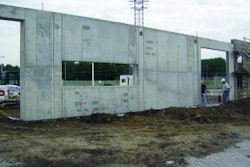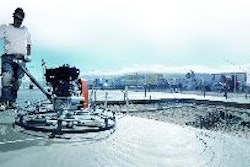
The producer prices of steel, aluminum and copper are rising again after more than a year of dropping off steadily.
And wood prices have risen some in recent months, too, according to the U.S. Bureau of Labor Statistics.
Industry analysts are taking this as a sign that the cheap construction days are dying.
"The days of construction estimates coming in 20 percent under estimate may soon be coming to an end," Ken Simonson, chief economist for the Associated General Contractors of America, stated in a press release. "These figures serve as an important reminder that governments and developers looking for a good deal on construction should act quickly before having to pay significantly more for their products. "
But it will take a little while for project owners to start seeing a change in project costs.
Moscow Builidng Supply's Scott Reisdorph, the contractor sales manager, said lumber in particular hasn't stopped falling for retailers yet.
"There's been really no noticeable change in buying at this point because it's been in such a slump for six months," Reisdorph said.
He said the lag comes from suppliers and mills maintaining reserves. But he said once home construction finally gets going again, the inventory will rapidly diminish and prices will rise sharply.
"It will happen quickly just as the fall happened very quickly," he said. "It's important to get materials bought and on site as that upswing begins. "
Tim Mason, administrator for the Idaho Department of Public Works, said the state's hands are basically tied when it comes to tackling projects while costs are low.
"If we had a stockpile of money and a place to put materials, maybe we could do something, but we really don't," he said. "The opportunity to react quickly and take advantage of it is kind of limited because we only have the money we have. "
The state has already been the beneficiary of low bid prices that have resulted from increased competition and falling construction materials prices. Bids on stimulus projects for road construction as well as new building construction have come in significantly lower than expected.
For example, Boise State University's new Center for Environmental Science and Economic Development, which went out for bid in February, is being built by Boise-based ESI for about half the estimated cost ($18.6 million instead of the estimated $36.4 million).
Mason said he's seen signs that spectacularly low bids are tempering on public works projects.
Another big public works project on the horizon is the Boise State's new business and economics building, estimated at a cost of $35 million. The bid date for the project has not been set, but the university plans to begin construction in the spring of 2010.

















